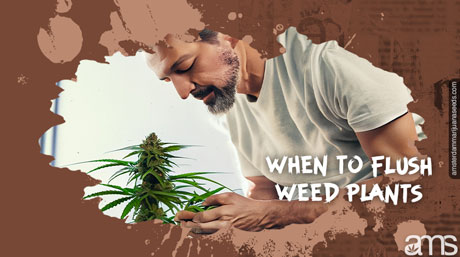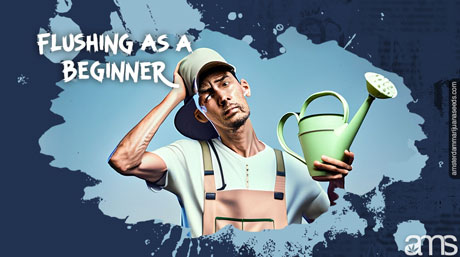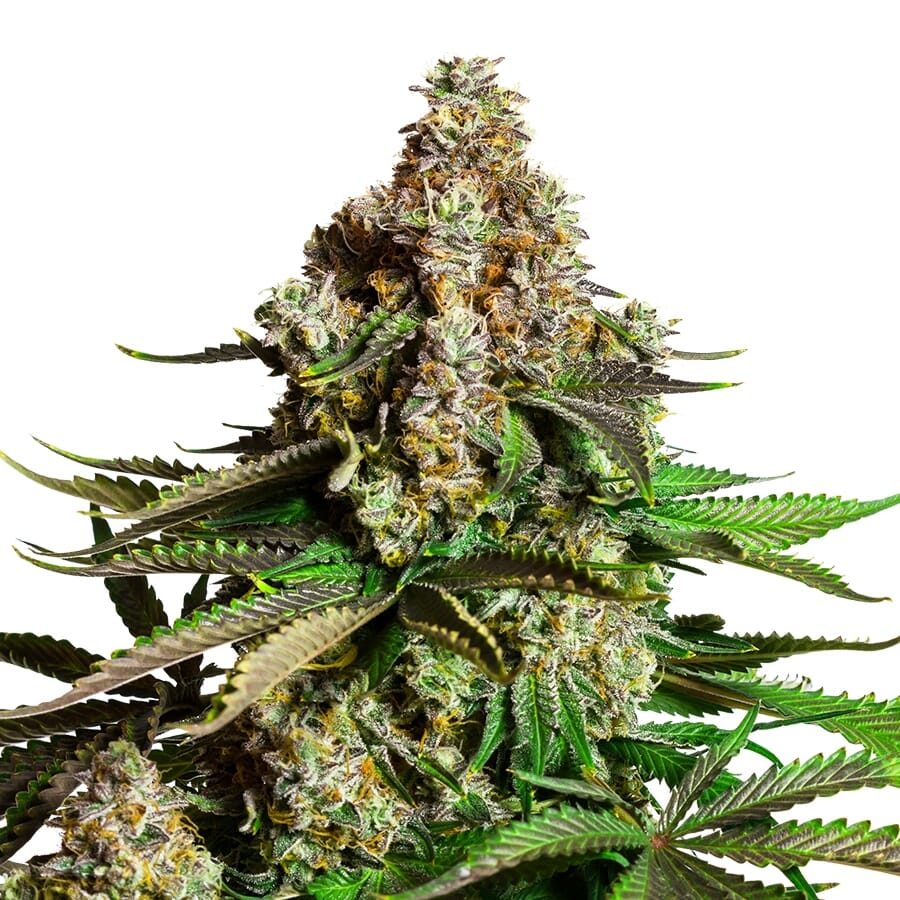Essential For Taste And Potency
As an ardent cannabis cultivator who has dedicated his life to perfecting the art of growing marijuana, I’ve come to appreciate the subtleties that make the difference between a good crop and an exceptional one. One such subtlety is the practice of “flushing weed plants” a simple yet crucial step that can significantly enhance the quality of your buds. Flushing, when done correctly, can result in smoother, purer, and more flavorful smoke.
What is Flushing weed?
Flushing is the process of feeding your cannabis plants with pure water, without any added nutrients for a certain period. The goal of flushing is to remove excess nutrients from the plant and the growing medium. The primary reason for this practice is to improve the quality of your buds. Over time, salts from the nutrients can build up within the plant and the growing medium, potentially leading to a harsher smoke and a less pure flavor.

When to Flush Weed Plants
The timing of when to flush your cannabis plants depends largely on the life cycle of the plant and the circumstances of your grow. There are three main instances when flushing may be necessary: before harvest when changing nutrients, and when your plants show signs of nutrient lockout.
Flushing Before Harvest
The most common time to flush weed plants is in the run-up to harvest. This is done to ensure that the harvested buds are free from excess nutrients, leading to a cleaner, smoother smoke. When smoked, buds that have been flushed properly tend to produce white ash, indicative of clean, properly cured buds. In contrast, buds that haven’t been flushed correctly tend to produce black ash and can often crackle and spark due to leftover nutrients. Generally, growers start flushing their plants around two weeks before the anticipated harvest date.
Flushing When Changing Nutrients
Another situation where you might need to flush your plants is when transitioning from the vegetative to the flowering stage of growth. In this scenario, flushing helps to reset the growing medium, preparing the plants to absorb a new suite of nutrients essential for blooming.
Flushing During Nutrient Lockout
Finally, flushing is a recommended course of action if your cannabis plants are experiencing nutrient lockout—a situation where the plants can’t absorb the nutrients they need. Nutrient lockout can be caused by incorrect pH levels, over-fertilization, or a buildup of salts from the nutrients. Flushing can help to restore balance, allowing your plants to uptake nutrients properly once again.

The Importance of Routine Flushing
As a beginner in the cannabis cultivation journey, one of the most common concerns is overfeeding your plants with nutrients. It’s understandable; you want your plants to thrive and produce high-quality buds, and it might seem counterintuitive to deny them nutrients. However, similar to how overeating can harm humans, overnutrition can negatively impact your plants, leading to nutrient lockout or toxicities.
To prevent this issue, novice growers should consider routine flushing, approximately once every two weeks. Regular flushing allows the plants to utilize stored nutrients and helps maintain the balance in the soil. It also prevents nutrient buildup, which can potentially harm your plants. It’s a precautionary measure that helps keep your plants healthy and your soil in prime condition for optimum growth.
While this might seem a bit daunting at first, remember that every master gardener started as a novice. With patience, consistent care, and a bit of trial and error, you’ll find the right rhythm that best suits your plants and your gardening style. Your commitment to learning and adapting is what will set you apart as an outstanding cannabis grower.

The Art of Flushing in Different Mediums
The process of flushing varies depending on your growing medium. Let’s take a look at the specific needs for the three most common mediums: soil, coco coir, and hydroponics.
Soil: This medium requires a significant amount of water to ensure a thorough flush, roughly three times the volume of the pot. The goal is to run enough water through the soil to drain out the bottom, taking any excess nutrients with it.
Coco Coir: Coco coir retains fewer nutrients compared to soil, so the flushing process is quicker. You will need about twice the volume of the pot of water for an effective flush. Always remember to pH balance your water to avoid inducing nutrient lockouts.
Hydroponics: Hydroponic systems are the easiest to flush since nutrients are immediately available to the plants. Simply replace the nutrient solution with pH-balanced water and let it circulate for a day or two.

Common Misconceptions About Flushing
One common misconception is that flushing starves the plant, harming its overall health and yield. This isn’t true. When done correctly, flushing merely allows the plant to use up stored nutrients. This can even lead to a final burst of growth, known as the ‘flushing effect’.
Another myth is that you don’t need to flush when using organic nutrients. While it’s true that organic nutrients are less likely to cause nutrient lockouts or toxicities, they can still accumulate over time and may need to be flushed out.
Lastly, some growers believe flushing will clear any disease or pest infestation. Unfortunately, this isn’t the case. Flushing targets nutrient build-up and won’t effectively combat pests or diseases, which should be handled separately.

Conclusion:
Flushing – An Integral Step for Exceptional Harvest
The art of flushing is often underrated, yet it holds great potential in transforming your cannabis cultivation journey. With proper flushing, your plants can produce cleaner, smoother, and more flavorful buds – a quality that sets apart an exceptional harvest from a merely good one. Mastering the technique of flushing might take some time and practice, but its impact on the quality of your yield is worth the effort.
Remember, as a passionate gardener, the pursuit of excellence doesn’t stop. There is always something new to learn, a technique to master, or a strain to cultivate. Keep exploring, keep learning, and keep growing. Whether you’re a novice or an expert grower, the world of cannabis cultivation offers endless opportunities to improve and experiment.
Want to dive deeper into the world of cannabis cultivation? Check out our blog for more insightful articles or browse through our extensive range of top-quality seeds. Happy growing!
FAQ about Flushing
1. What is flushing in cannabis cultivation?
Flushing in cannabis cultivation refers to the process of feeding plants with pure water without any added nutrients for a specific period. The purpose of flushing is to remove excess nutrients from the plant and growing medium, ultimately enhancing the quality of buds.
2. When should I flush my weed plants?
The timing of flushing depends on specific circumstances, but there are three main instances when flushing may be necessary. Firstly, it is common to flush weed plants before harvest to ensure the harvested buds are free from excess nutrients, resulting in a cleaner and smoother smoke. Secondly, flushing is recommended when transitioning from the vegetative to the flowering stage of growth. Lastly, if your cannabis plants experience nutrients lockout, flushing can help restore balance and proper nutrient absorption.
3. Are there misconceptions about flushing in cannabis cultivation?
Yes, there are a few common misconceptions about flushing. Some growers believe that flushing starves the plant and harms its health and yield, but when done correctly, flushing merely allows the plant to use up stored nutrients. Additionally, it is a myth that flushing is unnecessary when using organic nutrients. Even with organic nutrients, flushing may still be required to prevent nutrient accumulation. Lastly, flushing does not clear disease or pest infestations; it primarily addresses nutrient build-up, and pest or disease control should be handled separately.




